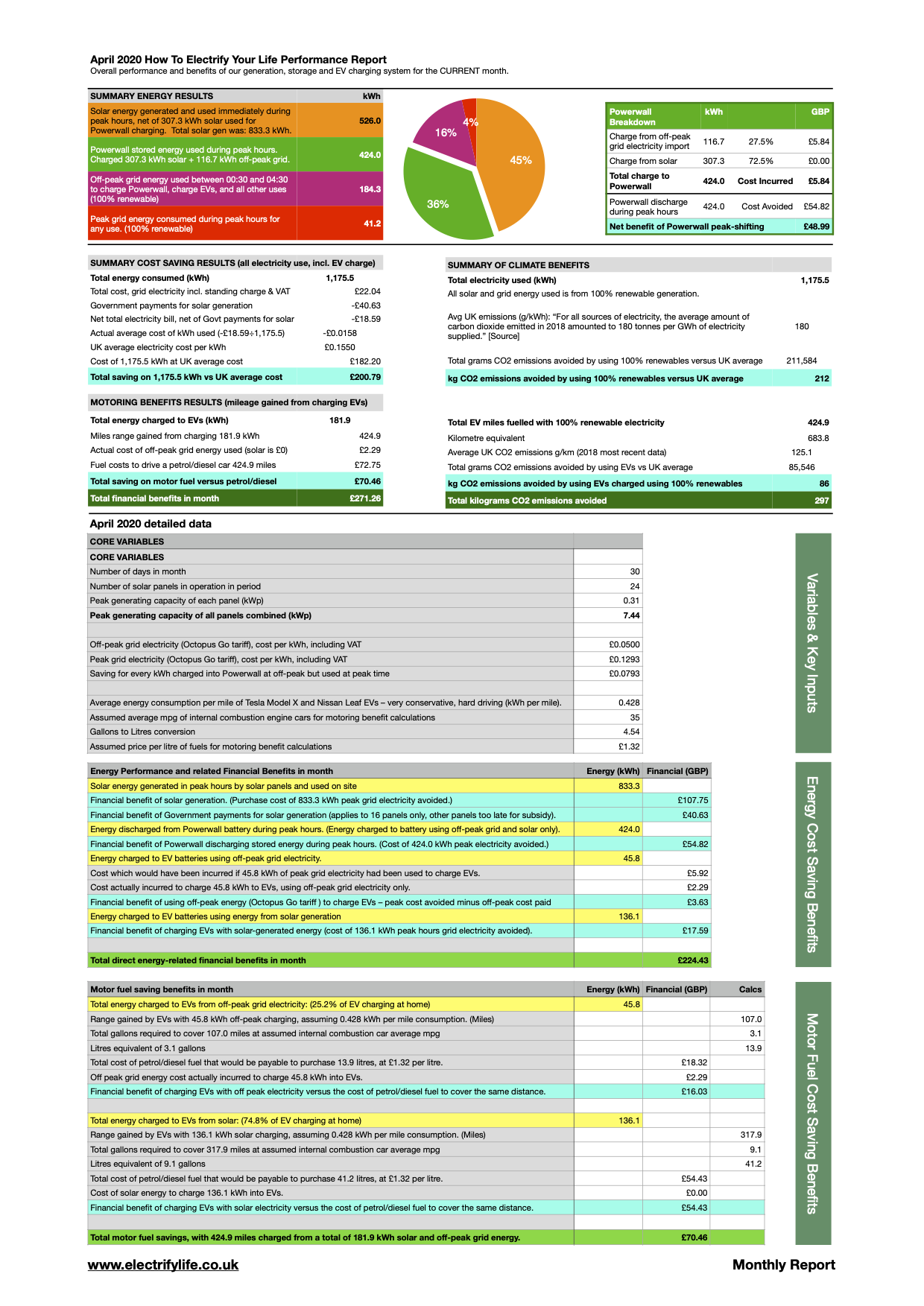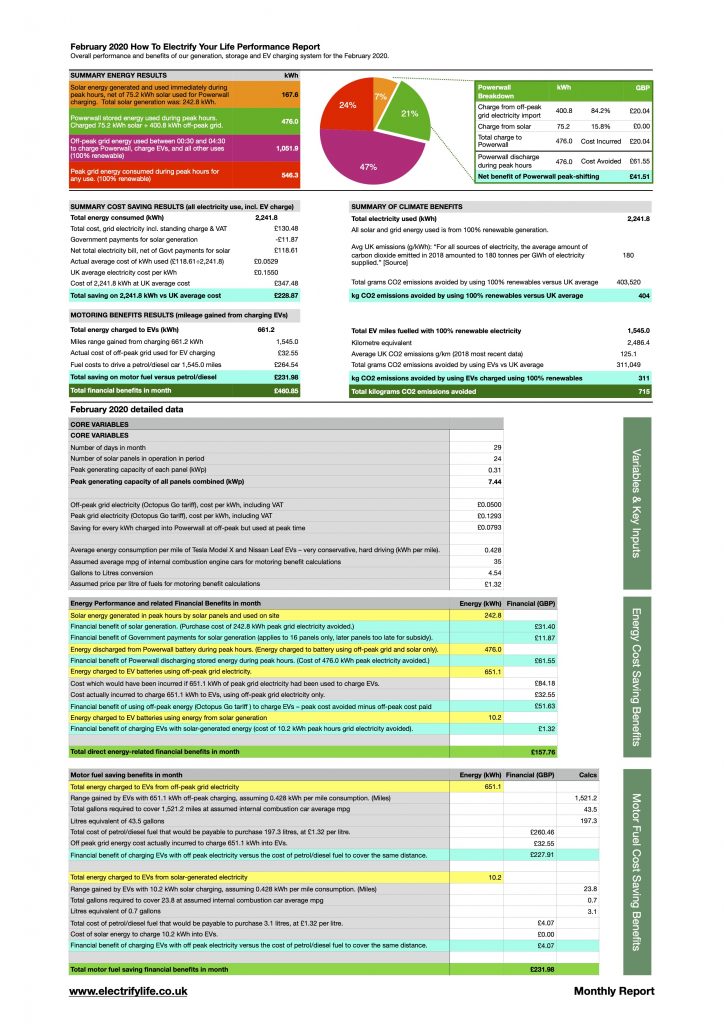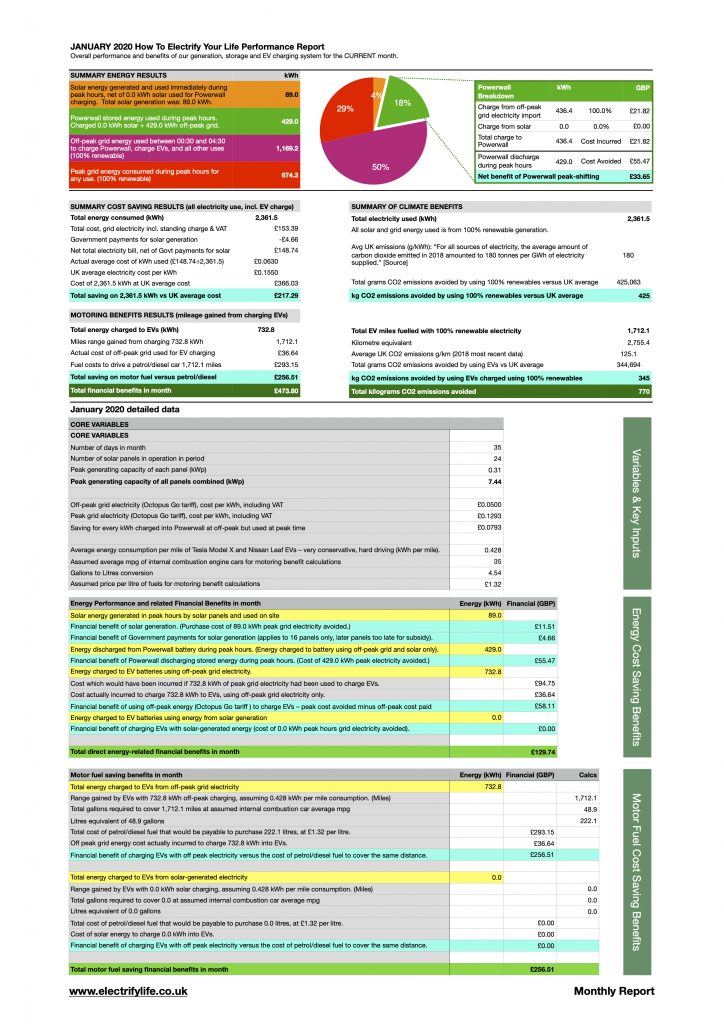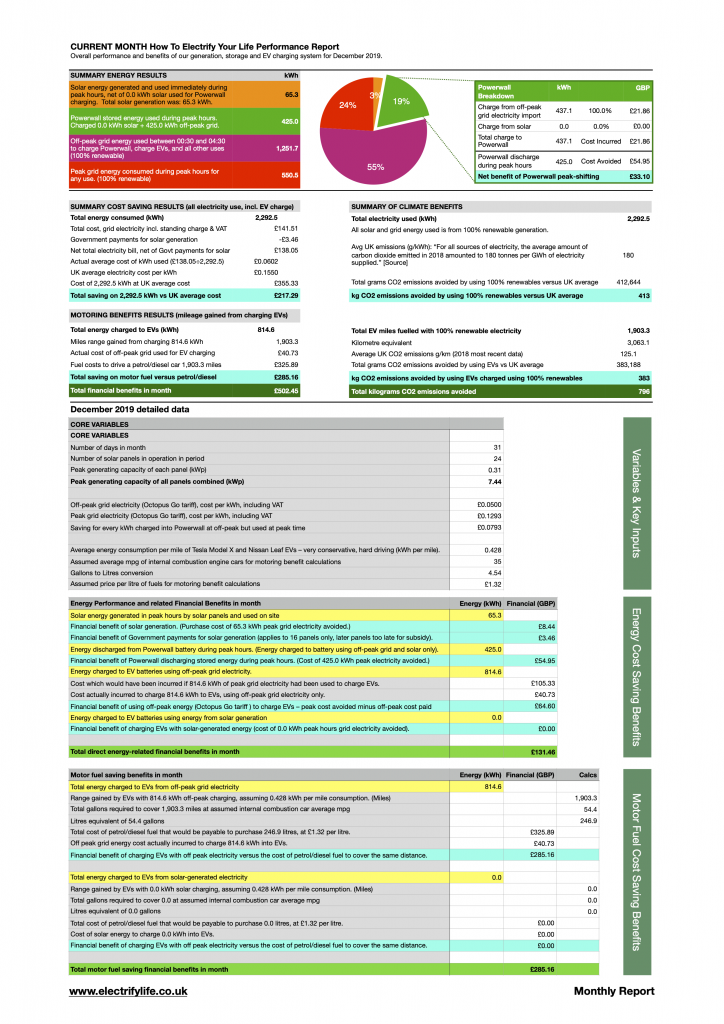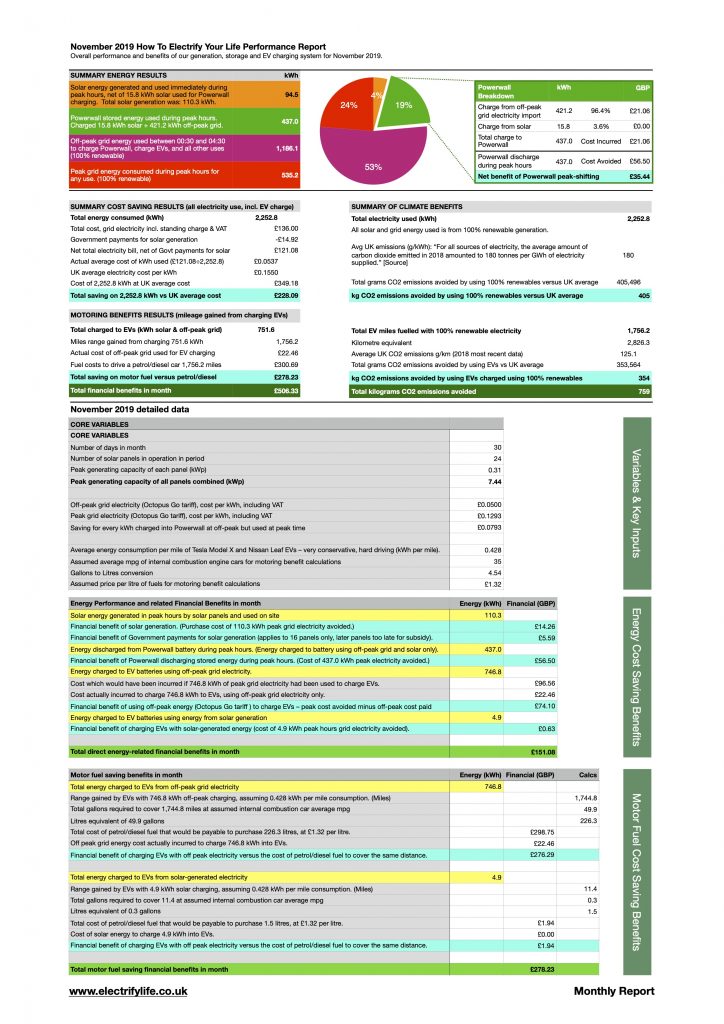With a superb 223.5 hours of sunshine, April generously bestowed lots of free kWh on the solar panels. But coronavirus ungenerously killed tens of thousands in the UK. Which meant lockdown. Which meant very little driving in the EVs. Which meant the vast majority of our stored energy went into domestic load via the Powerwall.
On the upside, “one permitted exercise a day” meant around 500 miles in early April on the eBike, through the beautiful countryside around home.


All was going brilliantly, until 14 April, when Alan got hit from behind on the back of the helmet by the wing mirror of a delivery van doing that COVID-driving thing; assuming there’ll be nothing else on the road. Long story short: two spinal fractures, two broken hands and face mashed up a bit. And the van driver didn’t stop. Alan found some minutes later unconscious on the road. On the upside: had the odd experience of being the only non-COVID patient in the A&E hospital. 2 consultants and an entire nursing team. On the downside: bike knackered. On the really big upside: one of the A&E consultants said that 8 out of ten cyclists who have that accident end up under the wheels of the vehicle which knocked them off. So, really glad to be alive!
So that’s why April’s performance report is a bit late getting to you folks. Apologies; better late than never.
Key results:
- 833.3 kWh solar generation; of which
- 307.3 kWh charged into Powerwall storage battery for domestic use;
- 526.0 kWh used at time of generation for domestic load or charging EVs.
- 184.3 kWh off-peak grid electricity consumed; of which
- 116.7 kWh was charged into Powerwall storage battery.
- 41.2 kWh peak electricity consumed.
- Total cost of grid electricity purchased: £22.04
- Total Government payments for solar generation: £40.63
- Net overall cost of electricity in month £-18.59 (i.e. negative 1.5p/kWh).
- Total consumption in month: 1,175 kWh
- Cost of 1,175 kWh at UK average cost per unit: £182.20
- Actual cost of electricity, including standing charge, net of Government payments: £-18.59
- Total savings on electricity costs alone vs UK average: £200.79
- Total savings, including the cost of petrol saved by driving EVs: £271.26
However, lockdown and injury meant very little driving in month. Only 424 miles. Hence a lower than normal emissions saving of only 297kg carbon dioxide avoided, compared to roughly 3/4 tonne in a typical month. Basically, we didn’t do very much green-powered driving, for which hydrocarbon fuel would otherwise have to be burned. So less planet-saving by us. But there was a huge amount of planet-saving by the coronavirus: kept billions of cars off the road worldwide and grounded global aviation. Silver lining or what?
Now, Mr Corona, thanks for coming in to HR for your performance review. Let’s start with the positives. No question about it, you’ve made the biggest contribution in modern history to solving the climate crisis. So an outstanding A+ on that score. And you might even put Ryanair out of business, so maybe humanity will have another reason to thank you. But, I’m afraid I am going to have to issue you with a formal warning about this global zombie apocalypse megadeath thing you’ve been doing. It’s just not acceptable and you’ll have to stop…
Back in locked down Northumberland, only a tiny fraction of our EV mileage was ‘fuelled’ with overnight cheap rate electricity, for a total cost of £2.29 in the month. The rest was solar, costing £0. So that gave us an overall average fuel cost of £0.005 (half a penny!) per mile.
Overall that’s a saving of £70.46, versus the £72.75 cost of fuel to drive an internal combustion engine (ICE) car for the same 424 miles. On that basis, ICE fuel costs would be around £0.17 per mile.
That makes our largely solar-powered miles around 34x cheaper than petrol! So feeling super-smug this month. Will aim for absolute zero fuel costs in May.
As usual, click the image below to download the full monthly report. Payback economics are here.
